Opportunities to have fun and explore outdoors are growing, as Pennsylvania now has 124 state parks after an announcement by Governor Tom Wolf last week of three new locations.
The $45 million investment will create new recreational opportunities to meet the commonwealth’s high demand, and conserve nearly 3,500-acres of vital natural and cultural resources.
“Our beautiful state parks are among the finest in the nation,” said Governor Wolf. “I’m proud to have secured funding in my final budget to make this investment in our park system, which will not only preserve invaluable natural resources and habitats for wildlife but provide in-demand access for Pennsylvanians to enjoy the beauty of nature and recreational opportunities.”
New State Parks in Chester, Wyoming, and York Counties
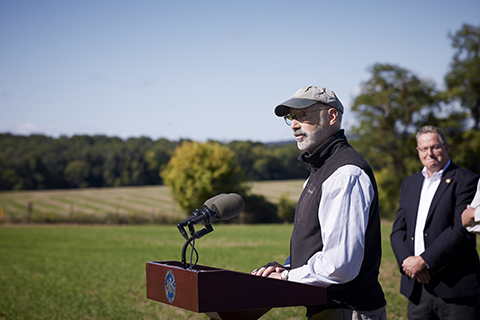
The new state parks are Susquehanna Riverlands in York County, Vosburg Neck in Wyoming County, and Big Elk Creek in Chester County. The names are temporary, as final names for the state parks will be decided during the planning process.
“Each new park site is unique in its value to a great system,” said DCNR Secretary Cindy Adams Dunn. “All of the new parks are steeped in cultural pre- and post-Colonial history, centered around important water resources and represent fantastic natural resource value.”
The Vosburg Neck site is Wyoming County’s first state park, while the Big Elk Creek location is under significant pressure from residential and commercial development.
In York County, the Susquehanna Riverlands site adjoins and builds on large tracts of already preserved open space.
Also, each site is within a half-hour of heavily populated areas where land for recreation use is often at a premium.
Big Elk Creek, Chester County
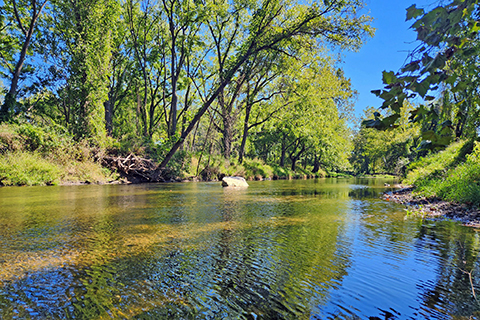
Big Elk Creek State Park is 1,712 acres acquired through The Conservation Fund with the assistance of the Mt. Cuba Center and Chester County.
It features 3.5 miles of Big Elk Creek, a tributary of the Elk River and the Chesapeake Bay.
Big Elk Creek was an important transportation and natural resource corridor for indigenous people for thousands of years, and an important area for freedom seekers on the Underground Railroad to the North.
“Chester County is beyond pleased that the commonwealth has chosen Big Elk Creek as one of its next state parks,” said Chester County Commissioner Marian Moskowitz, chairwoman. “We know the investment will further highlight the land’s natural attributes and habitats and become a place that our residents and visitors will love.”
Vosburg Neck, Wyoming County
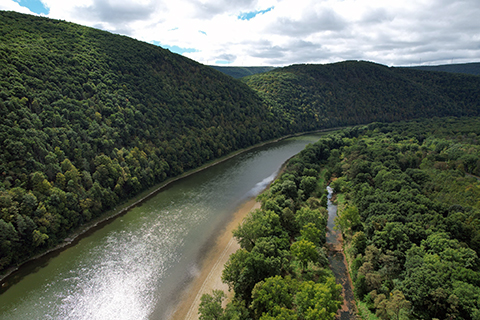
Vosburg Neck State Park is 669 acres being acquired with the assistance of the North Branch Land Trust.
The park will offer scenic hiking opportunities, including a climb to an impressive westerly oriented vista, pleasant strolls along a former railroad bed, invigorating shared-use trails, and significant public access for water-based recreation to the North Branch of the Susquehanna River.
“I can’t wait to see the faces of children of all ages as they look with awe on the mighty Susquehanna River and the magnificent, forested hills that enshrine it at this iconic location,” North Branch Land Trust Executive Director Ellen Ferretti said. “And to see the paddlers enjoying the easy access to the water and all that lies beyond -- to know that this land will be protected and enjoyed as part of the state park system -- forever.”
Susquehanna Riverlands, York County
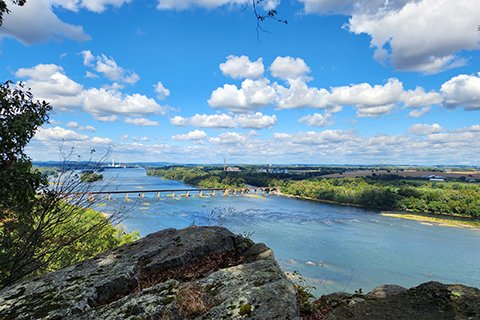
Susquehanna Riverlands State Park in Hellam Township includes 1,100 acres of natural resources.
The largely wooded tract, located where Codorus Creek flows into the Susquehanna River, protects critical water and forest resources.
The land was acquired with assistance from the Lancaster Conservancy and is adjacent to its Hellam Hills and Wizard Ranch nature preserves.
Combined, they protect the last large, wooded area along the Susquehanna River between the cities of Harrisburg, York, and Lancaster.
“By working side by side with DCNR, we are creating a conservation landscape that future generations will benefit from,” said Phil Wenger, president of Lancaster Conservancy. “Conservation needs both public and private organizations to partner to offset the impact increased development has on water and air quality, as well as ecological decline, to ensure our natural world doesn’t disappear before our eyes.”
Planning, Staffing Process for New State Parks
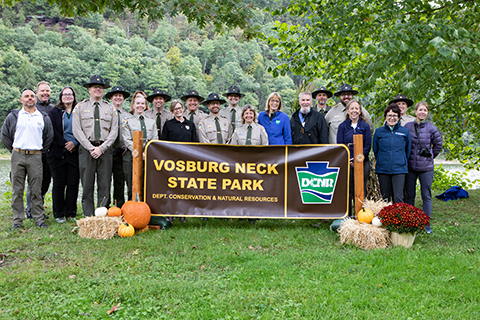
The new state parks are now open to the public; but won’t be fully operational and ready with new buildings such as restrooms and full staff until the end of 2026.
Park managers have been announced for all three locations. During the next several months, additional staff will be hired for the facilities, including rangers, maintenance staff, resource professionals, and educators. Also, during this time period:
- Equipment such as vehicles and mowers will be purchased
- Signs to help people find their way will be added
- Evaluations of existing natural resources and recreation infrastructure such as trails will occur
During the course of the next year, a master plan for each new park will be developed. That process will include:
- Working with a consultant to outline the type and extent of amenities for each park
- Determining how to develop and locate features sustainably
- Public and stakeholder engagement
Once the plan is developed, it will take several years to construct facilities such as campgrounds, restrooms, administrative offices, and maintenance buildings to operate the park and serve visitors.
Additional information about the new state parks, including updates about the planning processes for the parks and new recreation opportunities, will be posted at the DCNR website.